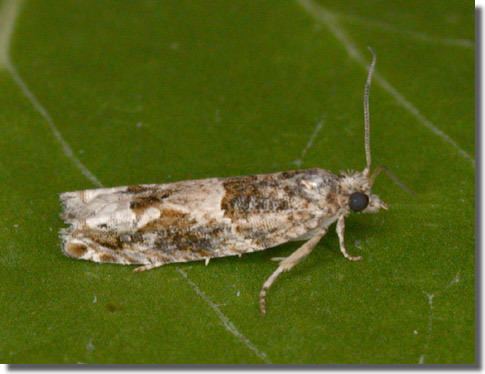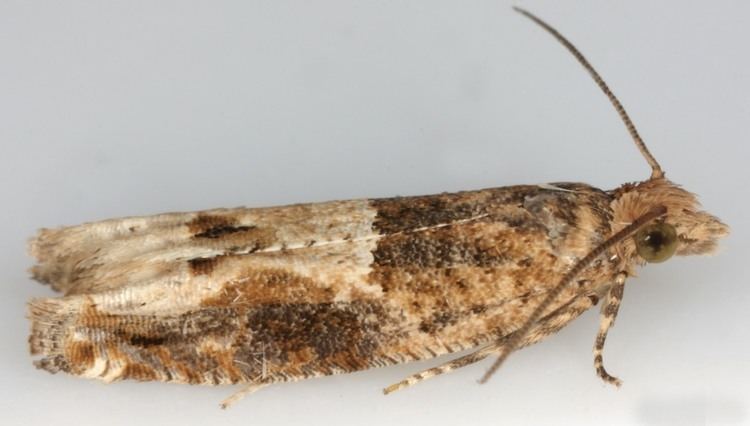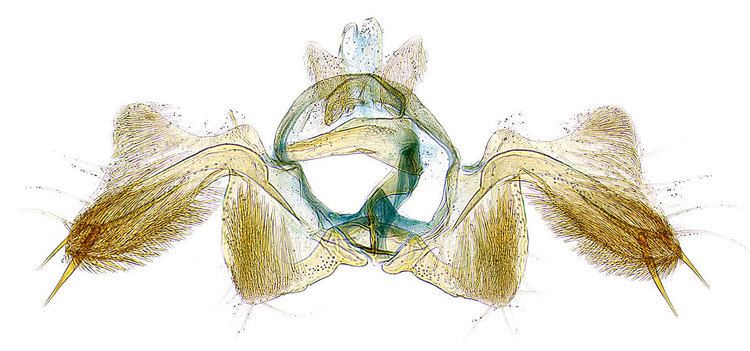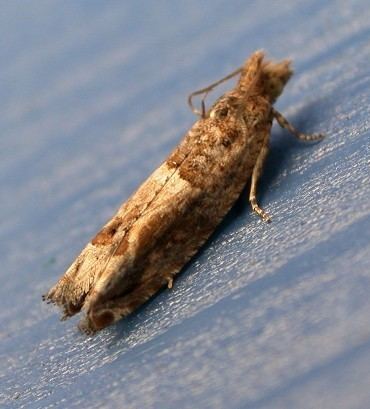Division Ditrysia Rank Species | Superfamily Tortricoidea Order Butterflies and moths | |
 | ||
Similar Crocidosema, Butterflies and moths, Celypha cespitana, Celypha aurofasciana, Endothenia marginana | ||
Crocidosema plebejana is a tortrix moth (family Tortricidae), belonging to tribe Eucosmini of subfamily Olethreutinae. It is found today all over the subtropical and tropical regions of the world and even occurs on many oceanic islands – in Polynesia and on Saint Helena for example –, but has probably been accidentally introduced to much of its current range by humans. In addition, it is also found in some cooler regions, e.g. in Europe except in the east and north; this is probably also not natural, as it was for example not recorded in the British Isles before 1900.
Contents

It is the type species of its genus Crocidosema, established by Philipp Christoph Zeller when he described the present species in 1847, as he found it unlike any moth then known to science.
Description and ecology

The wingspan of adults is 12–16 mm. In the seasonal parts of its range, this moth flies from midsummer to early autumn, e.g. from July to October in southern England. It is not quite clear whether there are several broods per year in the tropics, as it has been recorded on the Marquesas Islands only between January and April for example. The adults are active in the evening and attracted to lights.

The caterpillar larvae mainly feed inside the seed capsules and shoots of Malvaceae such as China Jute (Abutilon theophrasti), Marsh Mallow (Althaea officinalis), the tree mallow Lavatera arborea, Arrowleaf Sida (Sida rhombifolia), and various Gossypium (cottons) and Malva (typical mallows) species. The caterpillars have been found on other eurosids, including Crataegus hawthorns (Rosaceae), Cucurbita pepo pumpkins (Cucurbitaceae), and Eucalyptus (Myrtaceae). They may occasionally become pests of cotton.
Synonyms

This species was described time and again under different names from all over its wide range. But not even subspecies are accepted today, rendering all those other names invalid. In addition, it was variously assigned to other tortrix moth genera – usually close relatives of Crocidosema such as Epinotia (under its junior synonyms Paedisca, Proteopteryx and Steganoptycha) or Eucosma, but sometimes more distantly related Olethreutinae such as Grapholita (under the spelling variant Grapholitha) and Hedya (as Penthina, a misspelling of the junior synonym Pendina). In addition to being the type species of Crocidosema, one of these redescriptions – at that time still unrecognized as what it was – was used as late as 1965 to establish the genus Parasuleima as supposedly distinct from Crocidosema.
The invalid scientific names of this moth are:

